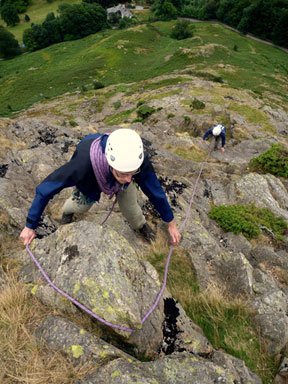Scrambling
By Oliver Darby
Definition: Scram-ble
Verb 1: Make one’s way quickly or awkwardly up a steep slope or over rough ground by using one’s hands as well as one’s feet.
This definition reminds me of many experiences I have had on numerous golf courses as I search for my ball prior to the scramble attempt!
Relative to golf we could define scrambling as, “the percent of time a player misses the green in regulation, but still makes par or better”.
Scrambling as a statistic is used to measure what I would describe as “bogey avoidance” after the player has missed the green in regulation. It will typically require some type of chip, pitch, lob, bunker shot and a holed putt.
Scrambling is measured by dividing the number of up and downs at par or better by the number of missed greens.
It is important to understand how expert golfers perform versus the average golfer. If you are looking to lower your scores and reduce your handicap it is useful to understand how effective you need to be at scrambling.
The scrambling leader on the PGA Tour will average nearly 70%. The tour average is nearly 60%. When you think about those numbers you can appreciate that they are outrageously good. Expert golfers get up and down 60-70% of the time when they miss a green in regulation!
Let’s move this a little closer to reality so we can see how amateur golfers perform:
0-5 Handicap 35.9%
5-15 Handicap 18.55%
15-25 Handicap 10.2%
25+ Handicap (yes, you) 5.12%
It would seem logical that the scrambling statistic is a good measure of evaluating how effective a players’ short game performs. Players with the best scrambling numbers own the best short games. This certainly seems a reasonable deduction to make. Look at the players who typically perform well in this category: Luke Donald, Steve Stricker, Ian Poulter. This year the likes of Jordan Spieth, Matt Kuchar and Brandt Snedeker feature in the top 10.
We need to dig a little deeper though to truly understand scrambling. It is certainly a good measure of how close a player can hit their chips, pitches and bunker shots. However, it can also help us understand how effective this player is at putting (since a one-putt is required).
When studying scrambling we know the best putters will have a higher scrambling percentage than an average putter. Why? They hole more putts!
Similarly the player who hits better approaches will also have a higher scrambling percentage. Why? They will be chipping and pitching from the fringe or fairway and can get the ball closer to the hole than the player who hits poor approaches into the rough and bunkers.
For you the reader identify where you need to improve so that your scrambling numbers can improve and your scores get lower. Maybe your swing needs to develop so that your approaches to the green are in more favorable positions. Maybe you need to hit more fairways so that you can get your approaches closer to the green. If the long game is solid develop the short-game areas that let you down.



